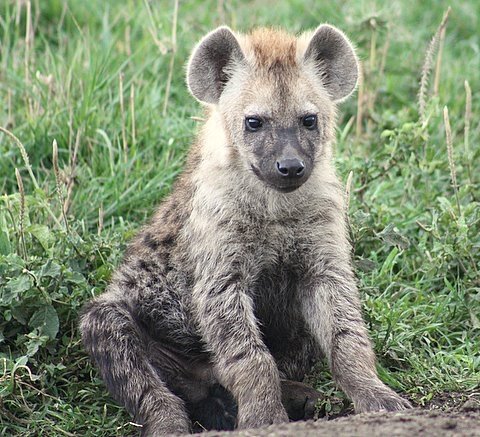|
Author: Kate Let's face it: we all love fun facts. With these, you can impress your friends and family, or at least procrastinate for a few minutes... The oldest hyena we’ve studied is K-Butt, who lived for nearly 17.5 years. The lovable Bailey holds the record for our heaviest hyena, weighing in at a whopping 179 lbs. She was just under 3 feet tall at the shoulder. Hyenas can run at 40 miles per hour for about 2 miles. For comparison, the fastest human clocked in at just over 27 miles per hour, and that was only for 100 meters. Wimp. In the longest hyena hunt ever recorded, a hyena chased an eland for nearly 15 miles. While the average hunting group size is 1.8 hyenas, successful zebra hunts require 10 or more hyenas. The reason? Hyenas need to call in reinforcements against male zebras, who protect their ladies fiercely and have a deadly kick. Here in the Mara, hyenas kill 95% of the food that they eat. I bet you scavenge a heck of a lot more than 5% of your food. Their bone-crushing bite force has been estimated at about 9000 newtons (2000 pounds), which roughly equals the force of a big NFL hit. They have 11 distinctive vocalizations. They can hear noises from over 6 miles away, and can probably identify odors from a distance of nearly 2 miles. A mother hyena’s milk contains 15% protein, compared to less than 1% protein in human milk. No wonder hyenas grow up fast and become big bullies! When erect, a female hyena's pseudopenis may be up to 7 inches long. Enough said. Remember, we're talking about spotted hyenas...the other hyena species are strange in their own ways. Most of the info here is from our observations. The rest is from the IUCN Hyaena Specialist Group website and the book The Spotted Hyena by Hans Kruuk. Both are fantastic sources of information for you hyena-philes out there!
0 Comments
Your comment will be posted after it is approved.
Leave a Reply. |
About
Notes From Kenya is a blog run by the students in the Holekamp Lab at Michigan State University, College of Natural Science, East Lansing, Michigan, U.S.A. Archives
July 2020
Categories |

 RSS Feed
RSS Feed